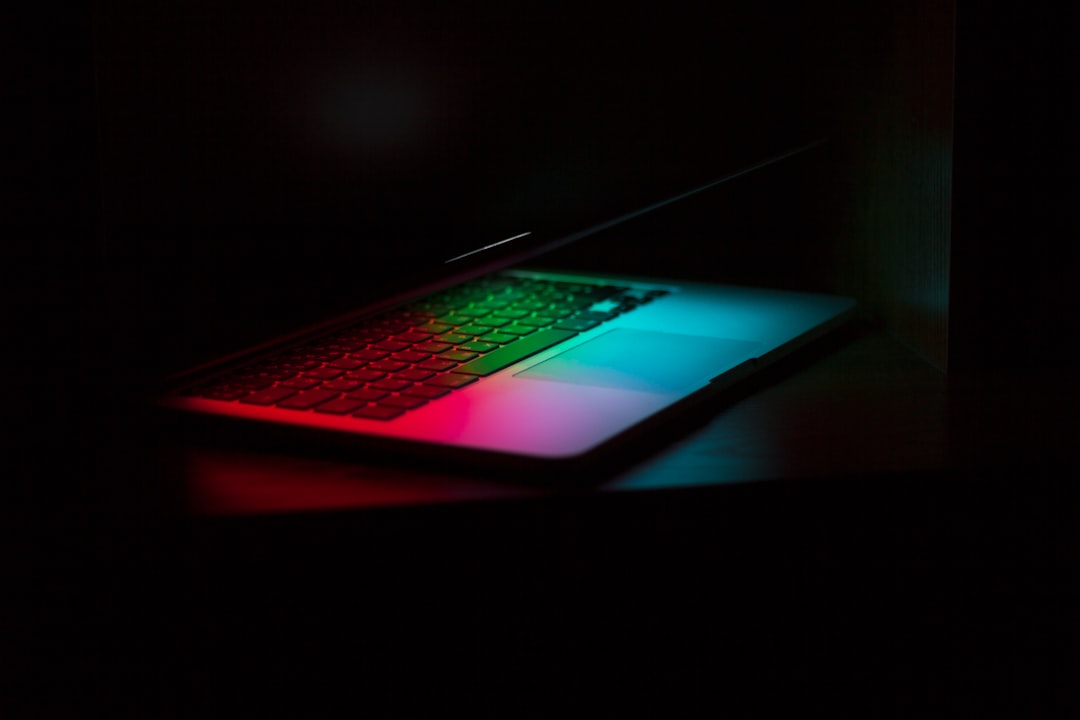Laser hair removal is a popular method for getting rid of unwanted hair on the body. It works by using a concentrated beam of light (laser) to target and destroy the hair follicles, preventing future hair growth. The process is effective because the pigment in the hair follicle absorbs the light, which then damages the follicle enough to slow down or stop hair growth altogether. It is important to note that laser hair removal is not a one-time treatment and typically requires multiple sessions to achieve the desired results. The number of sessions needed can vary depending on factors such as the color and thickness of the hair, the area being treated, and the individual’s skin tone.
Laser hair removal can be done at home or by a professional in a salon or clinic. At-home laser hair removal devices have become increasingly popular due to their convenience and cost-effectiveness. However, it is important to understand that at-home devices may not be as powerful as professional machines, and therefore may require more frequent treatments to achieve the same results. It is also crucial to follow the instructions carefully and perform a patch test before using the device on a larger area to avoid any adverse reactions or skin damage.
Key Takeaways
- Laser hair removal uses concentrated light to target and destroy hair follicles, resulting in long-term hair reduction.
- When choosing an at-home laser hair removal device, consider factors such as skin tone, hair color, and budget.
- Before starting at-home laser hair removal, it’s important to prepare your skin by shaving and avoiding sun exposure.
- Follow a step-by-step guide for performing at-home laser hair removal, including treating one area at a time and following the device’s instructions.
- Aftercare for at-home laser hair removal includes moisturizing and protecting your skin from sun exposure, as well as regular maintenance sessions.
Choosing the Right At-Home Laser Hair Removal Device
When choosing an at-home laser hair removal device, there are several factors to consider to ensure that you select the right one for your needs. Firstly, it is important to consider your skin tone and hair color, as not all devices are suitable for all skin and hair types. Some devices may be more effective on lighter skin with darker hair, while others may be designed specifically for darker skin tones. Additionally, consider the size of the treatment area and the speed of the device. If you plan to use the device on larger areas such as legs or back, a device with a larger treatment window and faster repetition rate may be more suitable.
Another important factor to consider is the safety features of the device. Look for devices with built-in skin tone sensors and adjustable intensity levels to ensure that you can customize the treatment to your specific needs and minimize the risk of adverse reactions. Additionally, consider the warranty and customer support offered by the manufacturer, as well as any additional accessories or attachments that may be included with the device. Reading reviews and seeking recommendations from trusted sources can also help you make an informed decision when choosing an at-home laser hair removal device.
Preparing Your Skin for At-Home Laser Hair Removal
Before starting at-home laser hair removal treatments, it is important to properly prepare your skin to ensure the best possible results and minimize the risk of adverse reactions. Firstly, it is essential to shave the treatment area before using the device. This is because the laser targets the hair follicle beneath the skin, and having long hair on the surface can cause discomfort and reduce the effectiveness of the treatment. Additionally, exfoliating the skin before treatment can help to remove dead skin cells and ensure that the laser can penetrate the hair follicles more effectively.
It is also important to avoid sun exposure and tanning beds before and after laser hair removal treatments. Sun exposure can make the skin more sensitive and increase the risk of adverse reactions such as burns or hyperpigmentation. Using sunscreen with a high SPF is recommended if sun exposure cannot be avoided. Furthermore, it is important to avoid using any other hair removal methods such as waxing or plucking in between laser treatments, as these methods can disrupt the hair growth cycle and interfere with the effectiveness of the laser treatment.
Performing Laser Hair Removal at Home: Step-by-Step Guide
| Steps | Details |
|---|---|
| 1 | Choose the right at-home laser hair removal device |
| 2 | Prepare your skin by shaving the treatment area |
| 3 | Adjust the device to the recommended setting for your skin tone |
| 4 | Start with a patch test to check for skin sensitivity |
| 5 | Begin the treatment by following the recommended pattern |
| 6 | Apply soothing lotion or gel after the treatment |
| 7 | Repeat the treatment sessions as recommended for best results |
Performing laser hair removal at home requires careful attention to detail and following the instructions provided with your chosen device. Firstly, ensure that your skin is clean and free of any lotions, creams, or deodorants before using the device. This will help to ensure that the laser can penetrate the skin effectively and minimize any potential adverse reactions. Next, shave the treatment area if you have not done so already, ensuring that the hair is short and not visible on the surface of the skin.
Once you are ready to begin treatment, follow the instructions provided with your device to select the appropriate intensity level and treatment settings for your skin tone and hair color. It is important to perform a patch test on a small area of skin before treating a larger area to ensure that you do not experience any adverse reactions. When using the device, ensure that you overlap each treatment area slightly to ensure full coverage and consistent results. After completing the treatment, apply a soothing gel or moisturizer to help calm the skin and minimize any potential discomfort.
Aftercare and Maintenance for At-Home Laser Hair Removal
After completing a laser hair removal treatment at home, it is important to follow proper aftercare and maintenance to ensure the best possible results and minimize any potential adverse reactions. Firstly, it is important to avoid sun exposure and tanning beds for at least two weeks after treatment to minimize the risk of hyperpigmentation or burns. Using sunscreen with a high SPF is recommended if sun exposure cannot be avoided. Additionally, it is important to avoid hot showers or baths immediately after treatment, as well as any activities that may cause excessive sweating.
In terms of maintenance, it is important to follow the recommended treatment schedule provided with your device to ensure that you achieve the best possible results. This may involve performing treatments every few weeks or months, depending on your individual needs and the specific device you are using. It is also important to avoid using any other hair removal methods such as waxing or plucking in between laser treatments, as this can interfere with the effectiveness of the laser treatment. Following these aftercare and maintenance guidelines can help you achieve long-lasting results from at-home laser hair removal.
Tips for Success and Avoiding Common Mistakes

To ensure success with at-home laser hair removal, there are several tips to keep in mind and common mistakes to avoid. Firstly, it is important to be patient and consistent with your treatments, as it may take several sessions to achieve the desired results. Additionally, it is important to follow the instructions provided with your device carefully and perform patch tests before treating larger areas to avoid any adverse reactions or skin damage.
Another common mistake to avoid is using a higher intensity level than recommended for your skin tone and hair color. This can increase the risk of adverse reactions such as burns or hyperpigmentation. It is important to start at a lower intensity level and gradually increase as needed based on your individual tolerance and response to the treatments. Additionally, it is important to avoid treating areas with tattoos or permanent makeup, as the laser can cause fading or discoloration.
When to Seek Professional Help for Laser Hair Removal
While at-home laser hair removal can be effective for many individuals, there are certain situations where seeking professional help may be more appropriate. If you have a darker skin tone or lighter hair color, you may benefit from professional treatments using more powerful lasers that are specifically designed for your specific needs. Additionally, if you have a medical condition such as polycystic ovary syndrome (PCOS) or hormonal imbalances that may be causing excessive hair growth, it is important to consult with a dermatologist or healthcare professional before starting any laser hair removal treatments.
Furthermore, if you experience any adverse reactions such as severe redness, blistering, or changes in pigmentation after at-home treatments, it is important to seek professional help immediately. A dermatologist can provide guidance on how to manage any adverse reactions and may recommend alternative treatments or adjustments to your at-home laser hair removal routine. Overall, while at-home laser hair removal can be effective for many individuals, it is important to seek professional help when necessary to ensure safe and effective treatments.
If you’re considering at-home laser hair removal, it’s important to understand the costs and effectiveness of the treatment. In a recent article on inlaserhairremoval.com, experts discuss the permanence of laser hair removal and whether it’s a worthwhile investment. Understanding the long-term results and potential savings can help you make an informed decision about pursuing laser hair removal for the bikini area or full body treatment in Virginia.
FAQs
What is at-home laser hair removal?
At-home laser hair removal is a method of removing unwanted body hair using a handheld device that emits laser light to target and destroy the hair follicles.
Is at-home laser hair removal safe?
When used according to the manufacturer’s instructions, at-home laser hair removal devices are generally safe. However, it is important to follow all safety precautions and perform a patch test before using the device on a larger area.
How does at-home laser hair removal work?
At-home laser hair removal works by emitting a specific wavelength of light that is absorbed by the pigment in the hair follicle. This damages the follicle and inhibits future hair growth.
Are there any risks or side effects associated with at-home laser hair removal?
Some potential risks and side effects of at-home laser hair removal include skin irritation, redness, and temporary changes in skin pigment. It is important to carefully follow the device’s instructions and use protective eyewear during treatment.
How many sessions are typically needed for at-home laser hair removal to be effective?
Multiple sessions are usually required for at-home laser hair removal to be effective, as the treatment is most effective on hair follicles in the active growth phase. Most devices recommend a series of treatments spaced several weeks apart.
Can at-home laser hair removal be used on all skin types and hair colors?
At-home laser hair removal devices are generally safe for use on a variety of skin tones and hair colors. However, individuals with darker skin tones or lighter hair colors may not experience the same level of effectiveness as those with lighter skin and darker hair.






